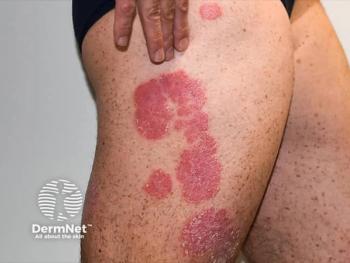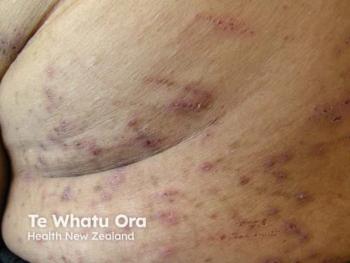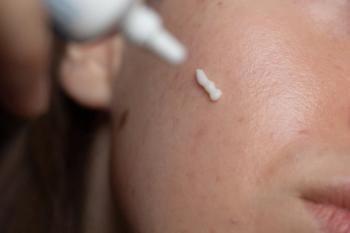
- Dermatology Times, July 2025 (Vol. 46. No. 07)
- Volume 46
- Issue 07
Switching Gears in Atopic Dermatitis: How Upadacitinib Helps Patients Reach Optimal Targets After Dupilumab Inadequacy
Data from the Level Up study shows that switching from dupilumab to upadacitinib enables more patients to achieve optimal targets of skin clearance and itch relief.
In the ever-evolving landscape of atopic dermatitis (AD) management, dermatologists are increasingly guided by the imperative to aim higher. The
Level Up: A Real-World-Inspired Study Design
Level Up is a global head-to-head, phase 3b/4 study evaluating adult and adolescent patients with moderate to severe AD with inadequate response to systemic therapy. In Period 1, upadacitinib demonstrated superior efficacy versus dupilumab across multiple end points, including EASI 75, EASI 90, itch reduction, and MDA at week 16—results now published in the
Importantly, the study design also reflects real-world clinical practice: patients who did not achieve EASI 75 on DUPI after 16 weeks were directly switched to UPA 15 mg once daily without a washout period, mirroring how dermatologists manage patients in routine care. Patients were eligible for escalation to 30 mg after one month if certain criteria were met.2
All outcomes assessed one month post-switch reflect the effect of UPA 15 mg monotherapy, as use of new topical treatments during this phase led to patients being classified as non-responders.2
What happened after the switch? A rapid and meaningful improvement:
One Month Post-Switch:
- 67% achieved EASI 75 (moderate target for skin)
- 58% achieved WP-NRS ≥4 (moderate target for itch)
- 32% achieved EASI 90 (optimal target for skin)
- 28% achieved WP-NRS 0/1 (optimal target for itch)
Four Months Post-Switch:
- 80% achieved EASI 75(moderate target for skin)
- 60% achieved WP-NRS ≥4 (moderate target for itch)
- 59% achieved EASI 90(optimal target for skin)
- 37% achieved WP-NRS 0/1 (optimal target for itch)
- 27% achieved both EASI 90 & WP-NRS 0/1 (meeting criteria for MDA)
From Moderate to Optimal Targets: Aligning with AHEAD
The AHEAD recommendations emphasize not settling for "good enough." Instead, they define moderate and optimal treatment targets —then modify therapy if those targets are not met within 3 to 6 months. Examples include:
- EASI 90 or IGA 0/1 for optimal skin clearance
- Worst Itch NRS 0/1 for optimal itch relief
Level Up data reinforces this paradigm, demonstrating that a timely switch to UPA can enable patients with a partial response to DUPI to achieve optimal outcomes and cross into MDA territory.
Reinforced by Real-World Evidence
The
Level Up Switch findings are further supported by a recent real-world multicenter study published in the
Safety Reassurance Amid Efficacy Gains
The Level Up study also confirmed a reassuring safety profile post-switch. Only 6.7% of patients experienced acne vulgaris. No serious infections were reported, and no new safety signals emerged—providing further reassurance for clinicians considering a treatment switch. These findings align with 6-year long-term safety data, which show no new safety signals and consistent tolerability over time.
Practice Implications
In line with AHEAD, the convergence of data from Level Up and TARGET-DERM paints a clear picture:
- Don’t settle for partial improvement.
- Switch early if targets are not met.
- Aim for optimal clearance and itch relief to truly improve lives.
With the availability of highly effective and fast-acting agents like UPA, achieving optimal outcomes in AD is not just aspirational—it’s actionable.
Christopher G. Bunick, MD, PhD, is editor in chief of Dermatology Times and associate professor of dermatology and translational biomedicine at Yale School of Medicine. Level Up data were presented at the Fall Clinical 2024 dermatology conference. Dr Bunick was a principal investigator in the LEVEL UP trial.
References
- Silverberg JI, Gooderham M, Katoh N, et al. Combining treat‐to‐target principles and shared decision‐making: international expert consensus‐based recommendations with a novel concept for minimal disease activity criteria in atopic dermatitis. J Eur Acad Dermatol Venereol. 2024 Nov;38(11):2139-2148. doi: 10.1111/jdv.20229
- Bunick C, Magnolo N, Moore A, et al. Switching from dupilumab to upadacitinib in adults and adolescents with moderate-to-severe atopic dermatitis and inadequate response to dupilumab: efficacy and safety results from the phase 3b/4 LEVEL UP study.
J of Skin. 2024;8(6):s451. doi:10.25251/skin.8.supp.451 - Silverberg JI, Bunick CG, Hong HC, et al. Efficacy and safety of upadacitinib versus dupilumab in adults and adolescents with moderate-to-severe atopic dermatitis: week 16 results of an open-label randomized efficacy assessor-blinded head-to-head phase IIIb/IV study (Level Up). Br J Dermatol. 2024 Dec 23;192(1):36-45. doi: 10.1093/bjd/ljae404.
- Silverberg JI, Calimlim BM, Grada A, et al. Real-world evidence on the benefits of optimal itch relief and skin clearance in atopic dermatitis management: a study from the TARGET-DERM AD registry. J Dermatolog Treat. 2024 Dec;35(1):2428729. doi:
- Georgakopoulos JR, Sheka D, Rankin B, et al. Real-world effectiveness and safety of upadacitinib for the treatment of atopic dermatitis in adult patients switched from dupilumab: a multicenter retrospective study. J Am Acad Dermatol. 2023 Dec;89(6):1308-1311. doi: 10.1016/j.jaad.2023.08.059.
Articles in this issue
5 months ago
Dermatology Times July 2025 Print Recap5 months ago
Is AI Transforming Skin Care?5 months ago
The Value of RAD, According to Clinicians5 months ago
A New Canvas for Conversations in DermatologyNewsletter
Like what you’re reading? Subscribe to Dermatology Times for weekly updates on therapies, innovations, and real-world practice tips.


















